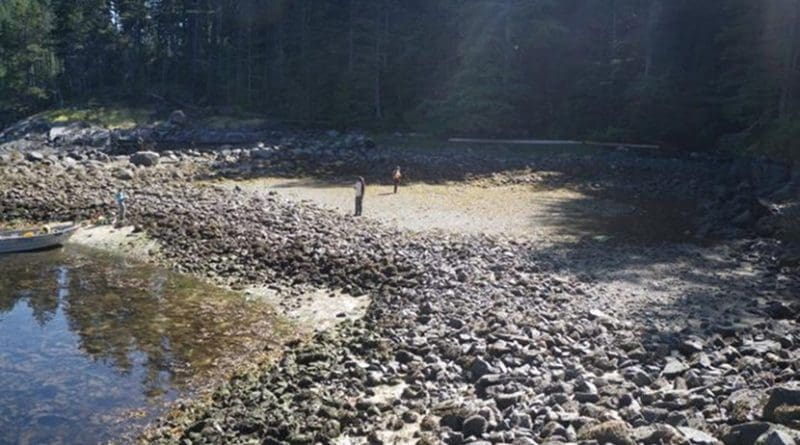Northwest Coast Clam Gardens Nearly 2,000 Years Older Than Previously Thought
A study led by SFU archaeology professor Dana Lepofsky and Hakai Institute researcher Nicole Smith reveals that clam gardens, ancient Indigenous food security systems located along B.C.’s coast, date back at least 3,500 years–almost 2,000 years older than previously thought. These human-built beach terraces continue to create habitat for clams and other sea creatures to flourish in the area.
For thousands of years, First Nations of the Northwest Coast, from Alaska to Washington, relied on clams as a staple food. Clam gardens have helped Indigenous peoples prevent the depletion of this important food resource despite ongoing harvesting to support the growth of dense and widespread human populations.
“Oral traditions, songs, and local Indigenous knowledge, as well as the archaeological record indicate that clam gardens were built and used throughout the coast,” says Dana Lepofsky. “However, because clam gardens are constructed of rock, it is difficult to determine the age of these features using standard archaeological techniques.
“The findings in this study provide unequivocal evidence for long-term and sustainable management of coastal ecosystems by Northwest Coast peoples — and supports what they have always said about their traditional marine management practices.”
For the study, published in PLOS ONE, the researchers analyzed multiple clam gardens located on Quadra Island, British Columbia. They used radiocarbon dating on the clams and other marine organisms that were trapped when the clam garden walls were built, as well as the accumulating sediment.
The researchers combined this information with the history of changing sea levels in the area to achieve a more accurate read than previous studies.
“This traditional form of mariculture has been used continuously for 3500 years and into the present day, and it holds potential to become a model for how local, sustainable food systems could operate in the future,” says Nicole Smith.

